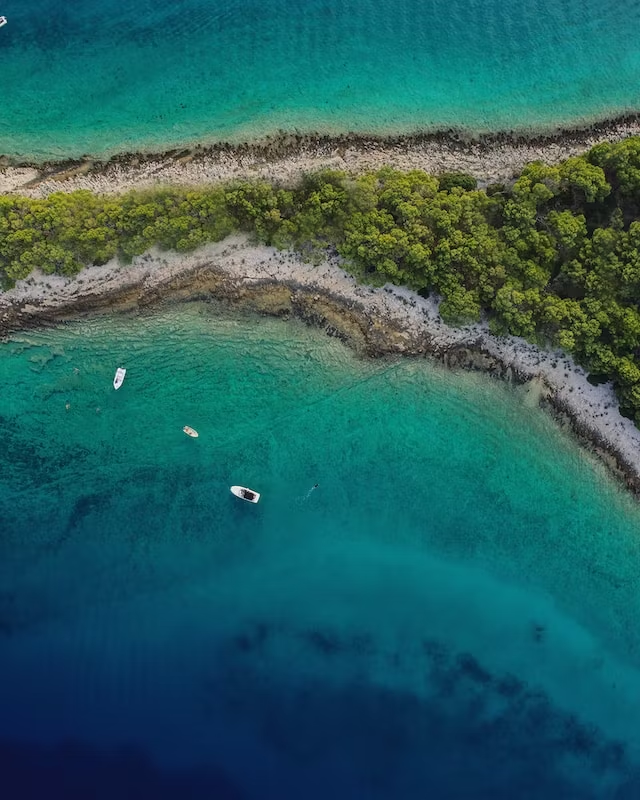
Top Picturesque Croatian Islands To Visit On Your Private Yacht Charter
Croatia, known as the "Land of a Thousand Islands," is a breathtaking country boasting a vast number of islands and islets scattered in the Adriatic Sea. While the official count has reached 1,000 islands, there are likely even more waiting to be discovered by those who embark on a yacht adventure in this enchanting destination. With endless anchorages and hidden islets to explore, one could easily spend months traversing the Croatian coastline. These islands have captured the hearts of civilizations for centuries, beckoning with their crystal-clear waters, mild climate, fertile land, and abundant sunshine.
Adored by the Romans as a place to relax and escape their daily lives, the Croatian islands have long been a coveted destination for travelers seeking a dreamlike holiday escape. While there are many islands to discover, we have selected five below that stand out from the rest and can easily be incorporated into a one-week yacht charter itinerary between the charming cities of Dubrovnik and Split in southern Croatia, also known as Dalmatia.
MLJET - Lush and Verdant
Nestled within the breathtaking Croatian Coast, the charming island of Mljet is a must-visit destination. You'll likely encounter this larger island either as the first stop on your northbound journey from Dubrovnik or as a final stop before reaching Dubrovnik when heading south.
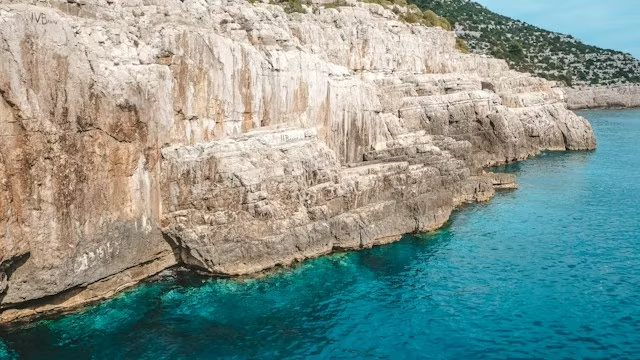
Mljet is a lush and verdant island characterized by dense forests. The northern end of the island is a designated Croatian National Park, ensuring its protection and preservation. The island's rich history can be traced back to Greco-Roman times when it was known as Melite or Melita. Centuries later, the Benedictine Order took control of Mljet and built a monastery on a small islet in the 12th century. Its significance diminished by the early 1800s and it was eventually dissolved.
Today, Mljet is a popular destination for yacht charters, with Polace village being a favored harbor on the northeastern end of the island. The village is situated on the largest and safest bay, surrounded by four small islands. Polace is also the gateway to the Mljet National Park, boasting an array of hiking and biking trails. History buffs will also appreciate the numerous Roman ruins in Polace, including a grand structure from the 5th century and the remains of a Roman Palace. In face, the village's name, Polace, is derived from the word "palace," a nod to its palace walls that run through the village.
In the breathtaking Mljet National Park lie two stunning lakes, Veliko and Malo Jezero (Large and Small Lake). In the heart of these lakes is a sight to behold: the historic Benedictine Monastery on Islet Melita. Rent a bicycle in Polace and explore the numerous cycling and hiking trails or pedal up the hill to catch a boat at the National Park for a trip to Islet Melita. Take a leisurely hike through the stunning surrounding woods, where you may even stumble upon wild asparagus in the springtime. Keep in mind that there is a small fee for accessing the National Park trails and taking the boat to Islet Melita. The surrounding waters are protected and only Mljet locals are permitted to fish there.
Experience the best of Polace's seaside dining by visiting one of the charming tavernas that line the water's edge. These establishments boast cages beneath their docks, where they keep their catch of the day alive until it's ready to be served for dinner. This ensures that you'll enjoy the freshest fish and shellfish possible. For an idyllic island getaway, enjoy the evening anchored in the crystal-clear bay in front of Polace on Mljet Island. Breathe in the fresh sea air and bask in the stunning views as you indulge in a meal that celebrates the island's natural beauty.
KORCULA - Historic Town
The picturesque Korcula is a must-visit island on a luxury yacht charter in Croatia. This charming island is thought to be the birthplace of the renowned explorer, Marco Polo, in 1254. The debate surrounding this claim continues to intrigue many, especially since the names "Marco" and "Polo" are widely used in the area. Throughout the centuries, Korcula has changed hands numerous times, leaving behind a rich and diverse cultural heritage.
Archaeological evidence shows that the island was inhabited in prehistoric times. In more recent history, there is evidence of settlement by various civilizations, such as the Greeks and Romans. The island was under the control of the Byzantine, Slavic, and Venetian empires at different points, and during times of transition, it became a hub for piracy. Today, Korcula boasts eight main villages, including Korcula Town, which has a population of approximately 3,000 people.
Korcula Island prides itself on its varied agricultural scenery, including vineyards and olive groves that produce exceptional wine and olive oil. The rich land is also abundant with fruitful orchards, abuzz with thriving bee hives producing delectable honey. In addition to these, the island's locals heavily depend on the fishing industry.
The historic town of Korcula is enclosed within robust 14th-century stone walls featuring defensive towers. The town itself is situated on an elevated oval shape, with a main pathway running along its highest point and smaller side paths branching off at angles, creating a resemblance to a fish skeleton. The herringbone pattern of the roads within the walls allows for gentle airflow while protecting from strong winds. The charming streets of the Old Town are exclusively for pedestrians, allowing visitors to fully immerse themselves in its historical charm. The quaint shops, delicious restaurants, cozy cafes, and a fascinating museum housed in what is believed to be Marco Polo's original residence make for a delightful stroll. Those arriving by yacht charter can easily dock near the Old Town or anchor in the picturesque harbor for a memorable visit to Korcula.

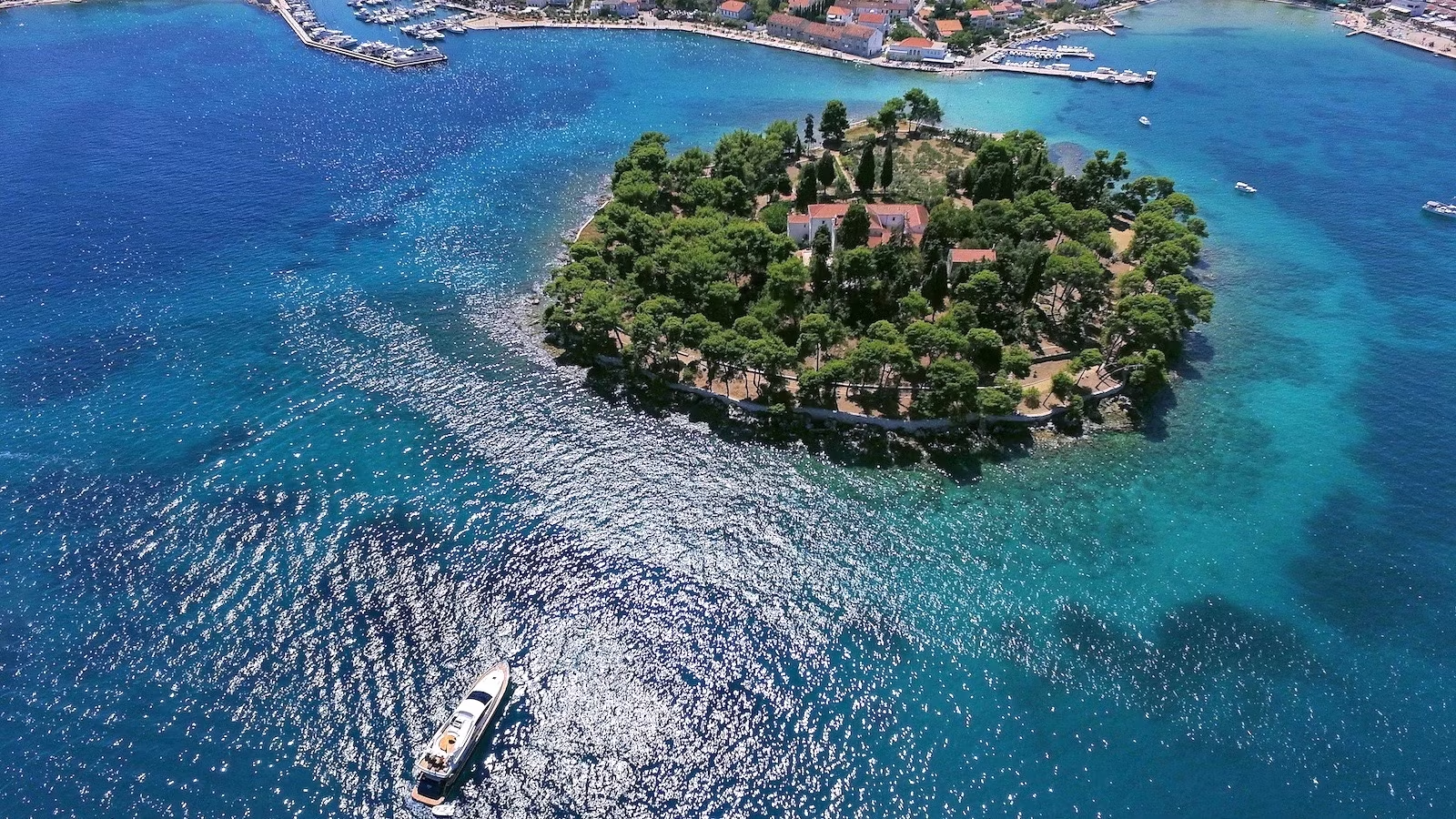
A superyacht charter in the Adriatic Sea presents an idyllic combination of stunning coastlines and lush vineyards, crystal-clear waters and secret bays.

A yacht charter to Dubrovnik is the ideal way to explore this part of the world – from the hidden coves of the Eliphati islands to the many uninhabited islands on the coast, you will be able to find privacy and seclusion on empty beaches.
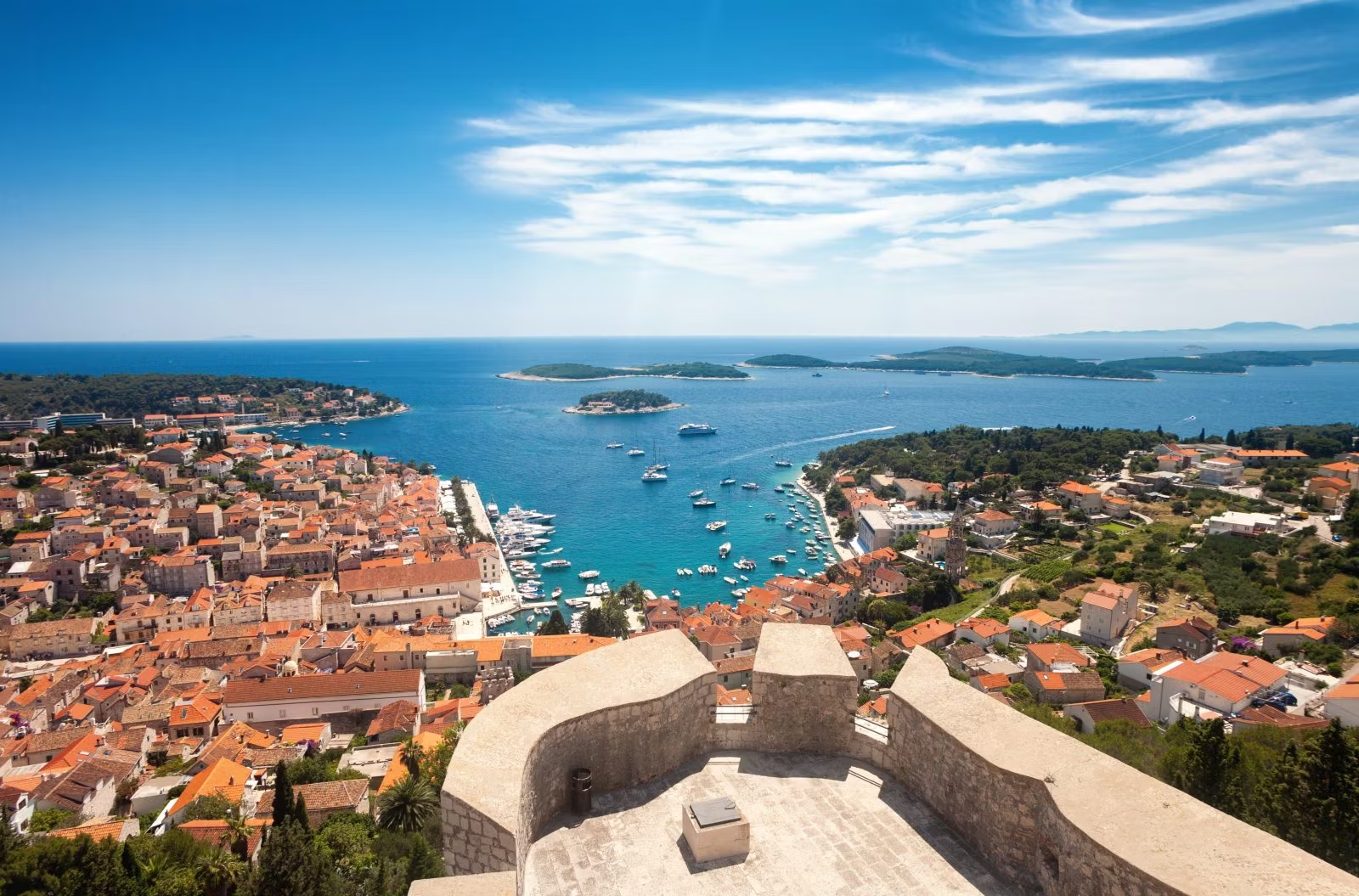
Charter a luxury yacht to Hvar, the most luxurious way to experience Croatia’s sunniest island.
VIS - Known For Its Size
Situated on the western coast of Croatia, Vis is an island known for its size and historical importance. Throughout its rich history, the island of Vis has been ruled by various civilizations and eventually became its own nation. The Greeks, Liburnians, Venetians, Italians, and Austrians have all held control over this stunning island, until it was incorporated into Yugoslavia in 1920 and later became a part of Croatia. The imprint of its past rulers can still be seen today in the local language, culture, architecture, and ruins scattered throughout the island. Vis also holds a special significance as the site where the Yugoslav Partisan Resistance Movement, led by Marshal Josip Broz Tito, established its headquarters during World War II. With the support of the British, Tito was able to liberate Vis from Italian and German control, leaving a lasting impact on the island. However, being a part of Yugoslavia had the most profound effect on Vis, as it served as a military base and was off-limits to foreign visitors until 1989. This isolation preserved the island's traditional way of life, free from modern developments and advancements. Guided tours are on offer to explore the island's landmarks from this period.
Not only the history buffs will enjoy their time in Vis. Visitors can relax and take in the seafaring atmosphere in picturesque villages or explore the island's ancient history. With beautiful anchorages and beaches, it's the perfect place to soak up the sun and swim in the crystal-clear waters of Croatia.

Vis is home to two primary towns, Komiza and Vis Town. Komiza is a charming village, home to many of the island's lobster fishermen. The picturesque town harbor is lined with stacks of lobster pots, adding to the quaint atmosphere. In Vis Town, visitors can explore the archeology museum housed in a 19th-century Austrian Fortress. The museum showcases the largest collection of Hellenistic artifacts in Croatia, including ancient Greek pottery, jewelry, and sculptures. A must-see exhibit is the exceptional bronze head of the goddess Artemis from the 4th century BC. Guests should also explore the displays of relics recovered from shipwrecks along the island's shores. With a rich history as a bustling shipping hub, Vis offers a wealth of fascinating artifacts to discover. A visit to this picturesque island on a private yacht charter is an experience not to be missed, regardless of one's interests.
HVAR - Picturesque Dalmatian Coast
Perched on the picturesque Dalmatian Coast, the island of Hvar can only be reached by sea. It is a must-visit destination on a crewed yacht charter along the Croatian shoreline, only accessible by sea. With its strategic location and rich history, Hvar has long been a coveted stop for seafarers. From ancient civilizations to the mighty Venetian Empire, this island boasts a wealth of historic landmarks and ruins that bear witness to its past. As you sail into Hvar City, the former site of a prominent Venetian naval base, you'll be captivated by the charming blend of old-world charm and modern luxury that this island offers.
Hvar has a rich and fascinating past, with traces of human habitation dating back to ancient eras. Its perfect weather, productive soil, and natural springs have continuously enticed settlers for many years. As seafaring commerce prospered in the Adriatic region, Hvar became a bustling center, bringing wealth and comfort to its inhabitants. The locals utilized the fertile land to grow crops such as grapes, olives, and lavender, which are prized for their exceptional quality and aroma. Additionally, the island's bounty of fresh seafood played a crucial role in its economic development.
Renowned for its boutique wineries, production of premium olive oil, and delectable seafood, the island of Hvar remains a popular tourist spot. Its enchanting scenery boasts vibrant vineyards, verdant olive groves, and captivating lavender fields, creating a dreamy backdrop. From sampling local wines at the various vineyards to purchasing high-quality olive oil and honey, and experiencing the sought-after lavender honey, visitors can fully immerse themselves in the island's offerings. Hvar also boasts four bustling towns to explore, including Hvar, Jelsa, the main port of Stari Grad, and Sucuraj, as well as stunning beaches and anchorages, such as the panoramic Milna beach on the southern coast, where one can take a refreshing dip in the crystal-clear waters.
If you're looking for a dynamic and fashionable setting, Hvar town is the perfect spot. The buzzing nightlife kicks off with a cool drink at the renowned Hula Hula Bar during sunset. After that, treat yourself to a tasty dinner at the central square before heading to the iconic Carpe Diem venue on the picturesque harbor for some dancing. For an unforgettable experience, take a short trip to one of the neighboring islands and keep the fun going at the famous Carpe Diem Beach.

During the day, embark on a scenic hike up to the castle, where you can admire the picturesque views of the town. The bustling main square is filled with fashionable stores, cozy cafes, and also charming kiosks selling lavender goods near the tender docks. As one of the oldest inhabited towns in the European Union, Stari Grad is home to the impressive Stari Grad Plain, a UNESCO World Heritage Site showcasing the ancient Greek farming tradition using small plots divided by stone walls, still in use after two millennia. Hvar is renowned as one of the most breathtaking islands on the planet, blessed with abundant sunshine.
Embark on a yacht charter to Hvar to discover its charming old towns, picturesque countryside, and pristine waters.—
Embark on a yacht charter to Croatia
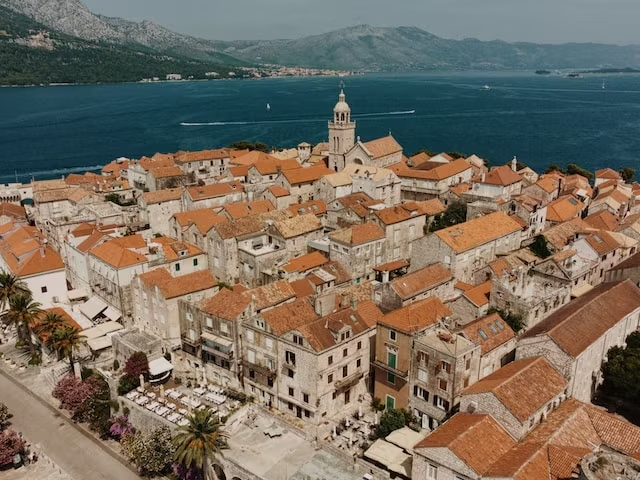
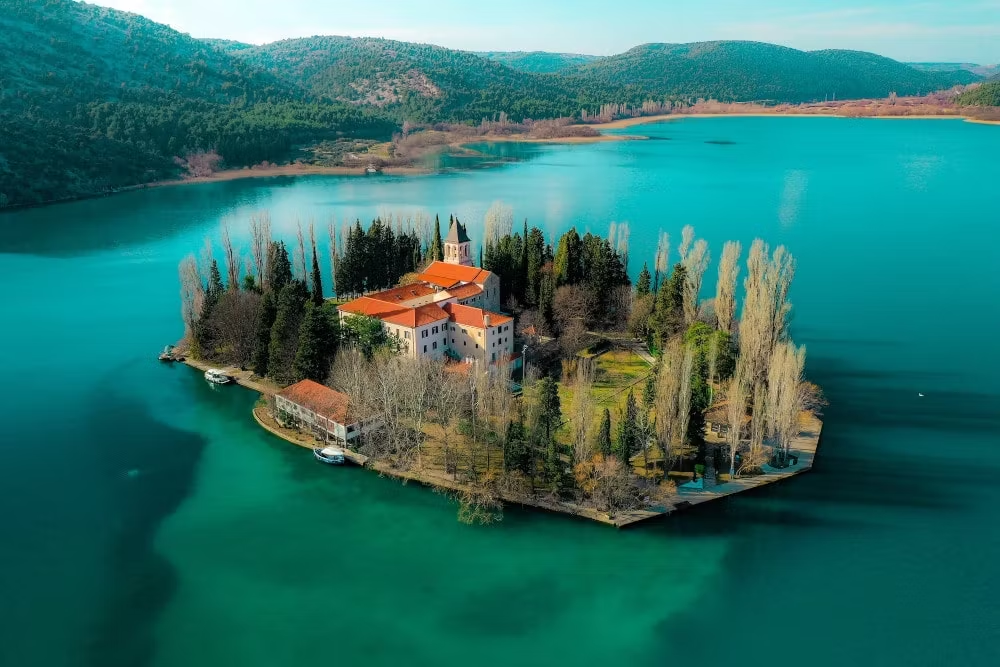

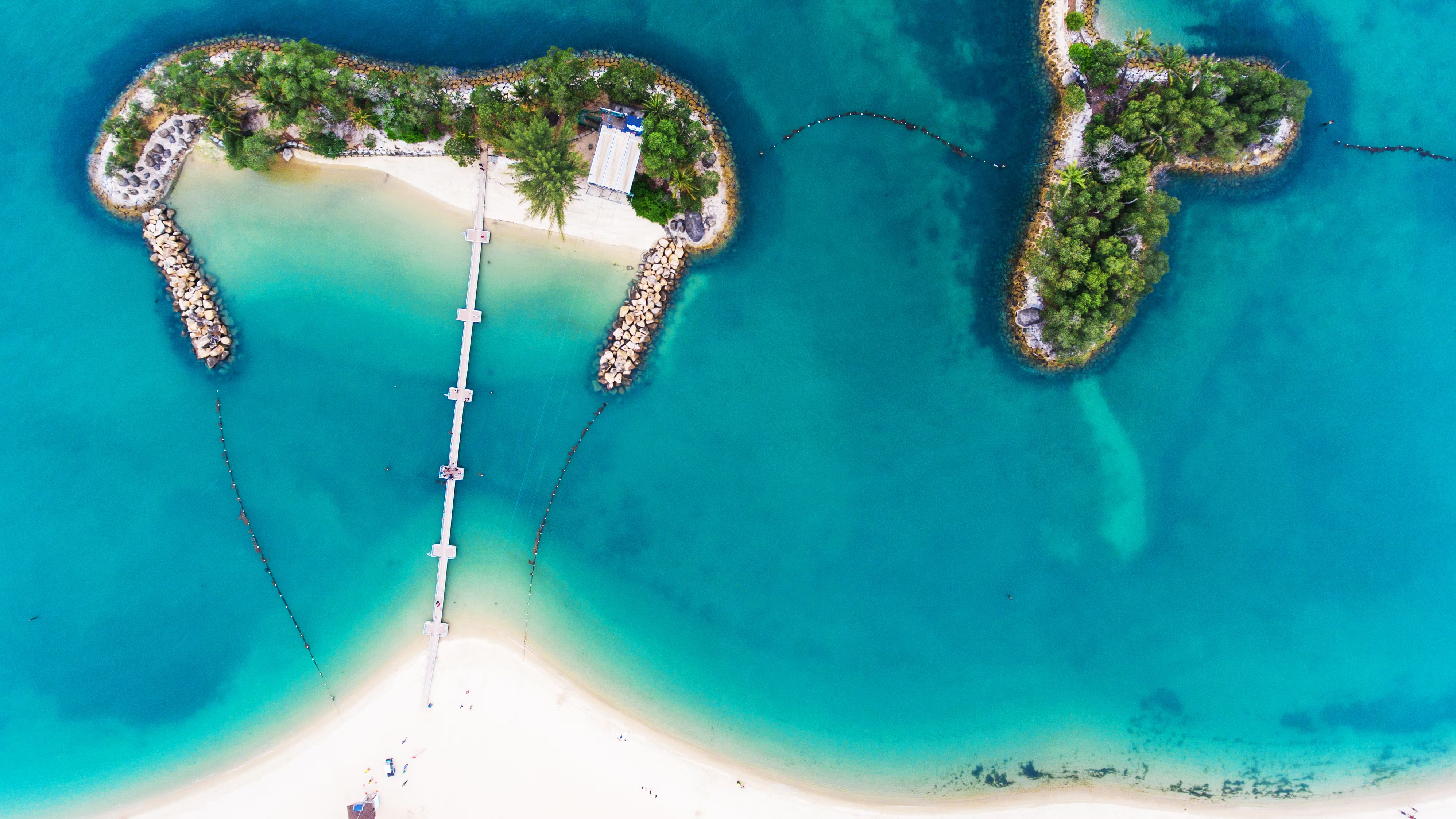
BRAC - "Stonecutter's Island"
Brac Island, often referred to as the "Stonecutter's Island", is home to plentiful quarries of white limestone and marble, ideal materials for construction and sculpture. Located near Split, it is a peaceful destination populated by locals, many of whom are skilled in traditional crafts. Skrip, the oldest settlement on the island, was traditionally located inland to protect it from pirate raids along the coast. The 16th-century Radojkovic Tower, now known as the Museum of Brac, is a must-visit during your time on the island. Another attraction in Skrip is the Olive Oil Museum and Tasting Room, which showcases a restored family olive oil mill from 1864. If you make reservations, a family member will give a demonstration of the traditional olive oil pressing process and offer tastings of various oils and vinegar, including herbed options. Right beside the Olive Oil Museum is a small but interesting museum dedicated to the island's ancient artifacts.
Home to the only Stonemasonry School in Croatia and one of the few in the world, Brac boasts an ancient tradition of manually cutting stone. Located in Pucisca, this school has preserved the art of stone cutting for over a century. Brac stone, renowned for its quality, has been used for centuries, including in the construction of Diocletian's Palace in Split. Visitors with an interest in traditional stone-cutting methods are welcome to tour the school and observe students at work.
The island is also known for its diverse hiking trails through fields of wild herbs. Popular routes include Bol to Vidova Gora summit, Murvica to Dragon's Cave, Nerezisca to Blaca Hermitage, Farska to Blaca Hermitage, and Sumartin to Planik. The iconic Zlatni Rat (Golden Horn) Beach, made entirely of sand, is a must-visit landmark on the island. Visitors can anchor off the shore and enjoy a scenic beach picnic. Windsurfing enthusiasts also flock to this spot for its ideal conditions on both sides of the Horn.

Thanks to the abundant reserves of limestone and marble on Brac, wineries here are renowned for producing high-quality wines. The unique terroir, with grapevines planted in limestone, adds a special touch to the grapes. You can also sample the homemade dessert wine Prosek at the Franciscan Monastery in Bol if you take a trip to the island during your charter. It is a great opportunity to experience the traditional Croatian way of life.